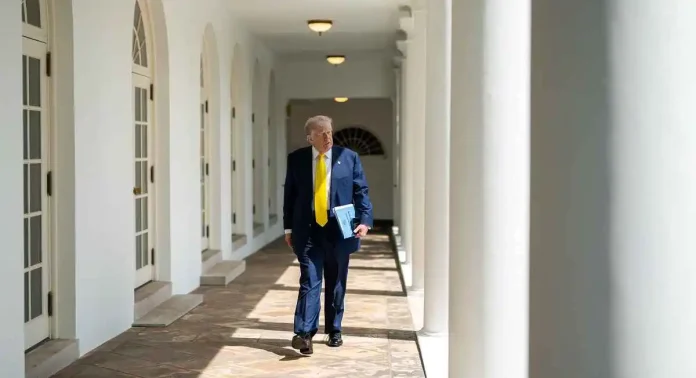
The U.S. Court of Appeals for the Federal Circuit’s August 29, 2025, ruling declaring a significant portion of President Donald Trump’s tariffs unlawful under the International Emergency Economic Powers Act (IEEPA) represents a pivotal moment in U.S. trade policy. Despite this setback, the Trump administration has signaled unwavering commitment to its tariff-driven strategy, with U.S. Trade Representative (USTR) Jamieson Greer affirming ongoing negotiations with key partners. The ruling, stayed until October 14, 2025, to allow for Supreme Court appeals, underscores tensions between executive authority and congressional oversight in trade matters.
This brief examines the ruling’s legal foundations, the administration’s adaptive responses, and broader implications for global economic stability. Drawing on recent developments as of September 1, 2025—including White House optimism for a Supreme Court reversal and exploration of alternative legal pathways—we assess potential scenarios.
The Evolution of Trump’s Tariff Strategy
President Trump’s second-term trade policy has centered on tariffs as a tool for economic leverage, national security, and domestic manufacturing revival. Initiated in February and April 2025, these measures targeted imports from China, Canada, Mexico, and others under IEEPA’s emergency provisions, aiming to address perceived trade imbalances and intellectual property theft. By mid-2025, tariffs had generated over $200 billion in revenue while sparking retaliatory actions and market fluctuations, with U.S. importers absorbing much of the cost—estimated at $50 billion annually in added expenses.
The Federal Circuit’s 7-4 decision on August 29 challenged this approach, arguing that while IEEPA grants broad emergency powers, it does not explicitly authorize tariffs or taxes without congressional approval. This ruling, stemming from lawsuits by affected industries and foreign governments, does not affect tariffs imposed under other statutes like Section 301 or 232 but invalidates “reciprocal tariffs” broadly. As of September 1, 2025, the stay provides a buffer, but without reversal, it could unwind tariffs on goods worth trillions, impacting sectors from steel to electronics.
Interpreting Executive Powers in Trade
The court’s interpretation hinges on statutory limits: IEEPA empowers the president to regulate international economic transactions during emergencies but excludes explicit tariff authority, which Congress reserves under Article I. Dissenting judges argued for broader deference to executive discretion, echoing past cases like Trump v. Hawaii (2018).
This decision aligns with growing judicial scrutiny of executive overreach, as seen in recent Supreme Court rulings curbing administrative powers (e.g., Loper Bright Enterprises v. Raimondo, 2024). If appealed, the conservative-leaning Supreme Court—bolstered by Trump’s appointees—may favor the administration, potentially expanding presidential trade latitude. Trade adviser Peter Navarro expressed confidence in a reversal during a September 1 interview, labeling the ruling “weaponized partisan lawfare.”
Continuity Amid Uncertainty
Despite the ruling, USTR Greer emphasized on September 1 that negotiations persist, with trading partners “moving forward” undeterred. Recent talks include revisions to the USMCA with Canada and Mexico, and potential deals with the UK and India, as confirmed in Greer’s Fox News appearance. President Trump’s August 31 social media post reiterated tariffs’ centrality, warning of economic “destruction” without them.
Backup strategies are in play: Experts highlight Section 338 of the 1930 Tariff Act, enabling up to 50% duties on discriminatory imports, and enhanced use of Section 301 investigations. As of September 1, administration officials have briefed on these contingencies, signaling readiness for prolonged litigation.
Geopolitical and Economic Implications
The ruling could embolden U.S. allies and adversaries alike. For partners like the EU and Japan, it offers leverage in negotiations, potentially accelerating deals to preempt further tariffs. China, facing heightened scrutiny, may exploit the uncertainty to advance its Belt and Road initiatives.
Economically, sustained tariffs risk inflation spikes—up 2-3% per recent models—and supply chain disruptions, with U.S. businesses reporting $1.7 trillion in losses since 2018. Senator James Lankford noted on September 1 that unresolved issues destabilize businesses, urging swift resolution. Globally, this may accelerate de-dollarization trends and WTO reforms.
Policy Recommendations
- Strengthen Congressional Oversight: Advocate for bipartisan legislation clarifying IEEPA boundaries to prevent future overreach.
- Diversify Trade Strategies: Prioritize multilateral pacts like CPTPP accession to reduce reliance on unilateral tariffs.
- Enhance Judicial Preparedness: Develop interagency task forces for rapid legal adaptations, including Section 338 invocations.
- Mitigate Economic Fallout: Offer targeted relief for affected industries via subsidies or tax credits, while monitoring inflation.
- Foster International Dialogue: Engage allies through forums like the G7 to align on fair trade practices, countering adversarial narratives.
The 2025 tariff ruling tests the durability of America’s protectionist pivot but does not dismantle it. With a Supreme Court appeal looming and alternative tools at hand, the Trump administration’s trade agenda remains viable, albeit contested. As global economic interdependencies evolve, the U.S. must balance assertiveness with collaboration to secure long-term prosperity. This brief underscores the need for adaptive policymaking in an era of judicial activism and geopolitical flux.



